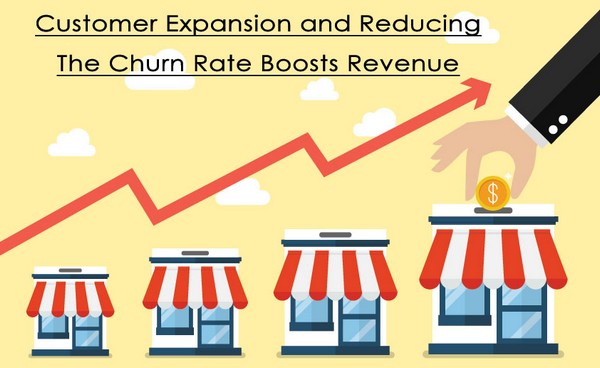Modern business is a cutthroat landscape. Fierce competition, unpredictable consumer behavior, and rising costs of production all characterize modern commerce. In such an environment, acquiring new customers is no easy feat. Which explains why many businesses proudly announce their new customer acquisitions in their Customer Success newsletters.
- Reach New Customers With Digital Marketing
- Unique features of Online Shopping increasing Purchase Interest in Customers
However, in the ever-expanding race to find new customers, many businesses may see an increase in their churn rate. This is counterproductive to all your customer acquisition efforts, which is something this blog explores.

What is Churn Rate?
The customer churn rate is a measure of the number of customers that unsubscribe from your services, stop buying your products, and/or stop engaging with your business. What this means in most cases is that you have lost them to a competitor. A big part of customer retention is to reduce the churn rate within your organization.
How does Churn Rate Affect Profit Margins
The thing is, however, as long as there is only a singular focus on acquiring new customers, you will continue to see a rise in your customer churn rate. And if you’re not paying attention, the situation can quickly spiral in an unwanted direction. It can quickly eat away at your efforts to acquire new customers and can cause a reduction in revenues and profits.
If you want your business to succeed, your focus should be broader than just acquiring new customers. To increase topline revenues you need to increase customer spending on your products or services. That means you should look towards customer expansion within your existing customers in addition to new ones.
What is Customer Expansion and Why is It Important?
In simple terms, customer expansion refers to creating extra value by increasing the usage of your product or service within your existing customers. This leads to increased customer spending within a base you already have. It is easier (and cheaper) to serve existing customers than to acquire new ones. In most cases, customer expansion results in lowering the customer churn rate.
Key Customer Retention Statistics
Customer retention and expansion follows the philosophy that a bird in hand is worth several in the bush. A recent study by a churn reduction and customer retention company Brightback indicates three key statistics that are shaping the subscription industry’s views on customer retention. These include:
- 93% of subscription companies view customer retention to be just as important (or even more important) as customer acquisition.
- 96% believe most customers for reasons that could be fixed or managed.
- 43% manage to save 6-25% of customers at the point of cancellation.
Examining a Shift in Business Priorities
So what does this mean? Many subscription startups like Netflix started out with aggressive growth plans and turned into billion-dollar businesses, disrupting and transforming the industry along the way. However, at many points, customer experience has suffered because of this acquire-or-die policy. Organizations used to believe that outgoing customers could easily be replaced. However, many are beginning to understand this growth model is stunted, and can even stagnate unless retention and acquisition are given equal importance
Most subscription companies seem to be optimistic about their ability to save and retain more outgoing customers. They believe that they have exactly what the subscriber requires, even if the subscriber is looking to cancel. Most subscription businesses realize how heavily saturated their markets have become. That is why they are willing to spend time, money, and effort on identifying areas that impact the customer experience and improve on them to retain more customers.
Cancellation is not the end of the sales funnel for a modern subscription business. Even at the very end, such businesses make efforts to retain their customers. It is encouraging to see that businesses manage to retain anywhere between 6% to 25% of customers who are walking out the door. This is because astute businesses recognize that an outgoing customer is signaling unmet expectations and that there is still time to remedy the situation. They do this through exclusive discounts, personalized offers, skipped payments, and downgrades/upgrades based on the reason for the cancellation.
How to Engage and Retain Existing Customers
Many modern companies that engage with other businesses or customers have prioritized customer penetration and expansion to adapt to a shifting landscape. A lot of them are doing much more than just talking about their priorities. They are actually transforming the way they function to ensure they can achieve these priorities. Some of the actions these businesses have taken to reduce the churn rate and increase customer retention/expansion include the following:
- Designing and deploying marketing campaigns that focus on educating existing customers on their products or services. This can also center around helping customers get more proficient at using these products, or explaining different aspects of the solutions they offer.
- Creating a sales funnel that does not just stop adoption but encourages deeper penetration among existing customers. For instance, businesses offering tiered services like Spectrum internet plans engage with customers and encourage them to upgrade to greater performance levels.
Customer retention and reducing the churn rate should be at the core of your business priorities. Remember, it is always cheaper to add more value to existing customers than to acquire new ones. Never underestimate the damage of letting your churn rate getting too high. Outgoing customers will shrink your revenue levels and profit margins.
